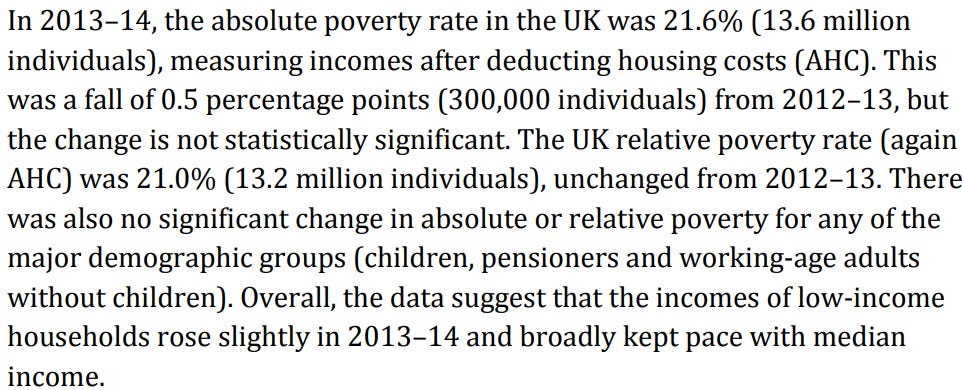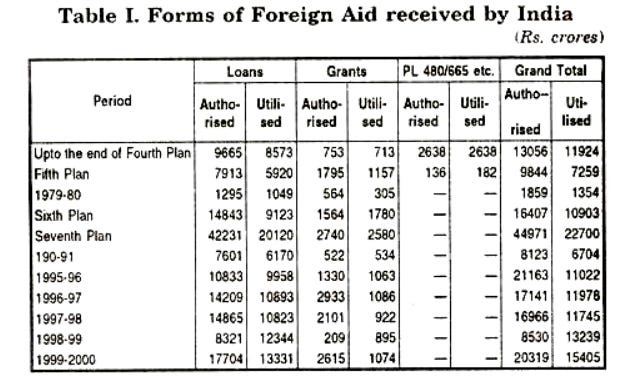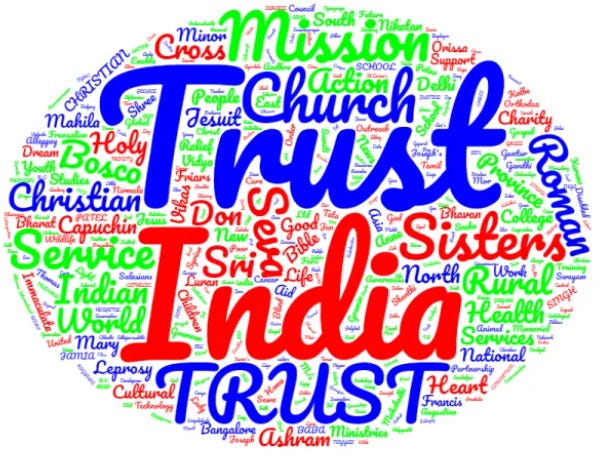Insightful newsletter of Drishtikone: Issue #226 - Poverty as a Business Model
From the Communists to the Colonial Masters, everyone found poverty to be a great tool to gain power over masses. Feign altruism and throw some crumbs and people will sell their mother!
Image by ArtTower from Pixabay
“I have sworn before a portrait of the late lamented comrade Stalin that I will not rest until I see these capitalist octopuses annihilated.” ― Ernesto Che Guevara
If a worm is floating by looking tempting and you don’t need to work hard to get your lunch - then the chances are that it has a hook attached to it.
And, the worm for the hungry fish is not an act of altruism for the one who is fishing. It is a stratagem to get the hungry fish for either a game or lunch.
The poor who are pompously given aid by the rich governments and organizations are just that - the hungry fish being hooked by the worm.
There is a reason why even after hundreds of billions of dollars given to African countries and others like India, no real development ever happened! What really does the trick is not aid or those elite NGOs which have nothing to really show for their money - but an ecosystem for start-ups and businesses.
The lies about aid and NGOs are sold by the unscrupulous to keep their web of colonial power tools in place.
Aid and Poverty - insights and current direction
In 2015, UK passed a law - the International Development Bill which made it legally binding to distribute 0.7% of gross national income for aid to other countries. This at a time when the UK’s own poverty was over 20%!
Some of the overenthusiastic government backers claimed it was to further the liberal agenda of doing altruism. Anyone who knows the history of the UK in the last 200 years knows that the UK government has never been God’s own shit that they would like the world to believe. So is aid given for altruistic reasons? Even the famous $13 billion Marshall Plan that the US instituted for the development of Europe was for their own foreign policy aims!
Altruistic sentiment can be attributed to the creation of the programme. Still, the Marshall Plan worked best as a tool of US foreign policy during a time which aimed to contain the spread of pro-Communist sentiment by portraying capitalist countries as more prosperous than their Communist counterparts. (Source)
In February 2010, a group of farmers in a village in Mubende, Uganda heard loud gunfire. Armed men were there to burn their crops and houses. Their livestock was being gunned down as well. After that 20,000 farmers were taken at gunpoint and their lands were taken away from them!
Who was behind this?
World Bank!
World Bank had a forestry project for which it was giving money and it promoted forestry as better use of land as opposed to farming.
That incident made headlines and investigation was ordered by the World Bank regarding its role in perpetuating that crime against humanity. But nothing happened. William Easterly wrote about this in his book “The Economics of International Development: Foreign Aid versus Freedom for the World's Poor.”
That is the curse of NGOs and Foreign Aid.
Dambisa Moyo, a young Zambian-born economist educated at at Harvard and Oxford and worked at Goldman Sachs and the World Bank has been a strong critic of the foreign aid. She strongly argues against foreign aid to poor countries in her book “Dead Aid.” She writes in a Wall Street Journal article - “Why Foreign Aid is Hurting Africa.”
Giving alms to Africa remains one of the biggest ideas of our time -- millions march for it, governments are judged by it, celebrities proselytize the need for it. Calls for more aid to Africa are growing louder, with advocates pushing for doubling the roughly $50 billion of international assistance that already goes to Africa each year. Yet evidence overwhelmingly demonstrates that aid to Africa has made the poor poorer, and the growth slower. The insidious aid culture has left African countries more debt-laden, more inflation-prone, more vulnerable to the vagaries of the currency markets, and more unattractive to higher-quality investment. It's increased the risk of civil conflict and unrest (the fact that over 60% of sub-Saharan Africa's population is under the age of 24 with few economic prospects is a cause for worry). Aid is an unmitigated political, economic, and humanitarian disaster. (Source)
Moyo shares interesting insight into the relationship between aid and poverty.
“Between 1970 and 1998, when aid flows to Africa were at their peak, poverty in Africa rose from 11 percent to a staggering 66 percent.” (Source)
Even though she uses correlations between different factors without proving causation necessarily. But the strong sense of how these metrics tango is hard to miss!
After all, if the direct objective of aid is to reduce poverty, but it ends up going up 6 times, then one has to ask the right questions - Wast it really helping or worsening things?
The crux is that when free money is coming from those whose agenda is to wield power over another society - democracy is the last thing that will enable all that. Dictatorship is better aligned to that situation. For, someone who can beat out the rest will get in and loot all that free money and promise the fruits of vicarious power that the giver wanted in the first place. It is as simple as that!
When you look at the Indian experience, you see something very similar. This was until 1992.
We all know how the public sector corporations registered losses and where all that money went.
Also, who wielded power while the nation itself was up for a fire sale! (The KGB papers - 'It seemed like the entire country was for sale')
Now, if you take the figures from the table below, which shows the grants and loans provided to India over the five-year plans and thereafter until 2000, you will see that the money that came to India was INR 169,379 crores.
If you take the weighted average of the USD to INR rate over 1947 to 2000, you will find that we are looking at USD 155 billion.
That’s the scale that we are talking about!!
So did India’s economy really show the impact of that much money having been pumped into the country?
Or did it go to fatten the corrupt politicians, as most aid does?
We all know what the answer is.
Compare this to how one interesting competition helped Nigeria to change things around.
From 2012 to 2015,the government gave away over $100 million dollars to over 3,000 entrepreneurs as part of the YouWin competition. More than $50 million has already been disbursed. The winning entrepreneurs have received grants averaging $50,000 dollars to start or expand a business, and thus create jobs. Only people ages 40 and younger were allowed to apply. (Source)
In fact, economist and blogger Chris Blattman asks an interesting question regarding this competition.
“Is this the most effective development program in history?” (Source)
William Easterly is a developmental economist who comes out with hard-hitting yet difficult to argue insights. His main thrust has been that the NGOs and foreign aid interventions do not help any society. Local innovation does!
“Remember, aid cannot achieve the end of poverty. Only homegrown development base on the dynamism of individuals and firms in free markets can do that.” ― William Easterly, The White Man's Burden: Why the West's Efforts to Aid the Rest Have Done So Much Ill and So Little Good
Creating ways and bringing in funds and incentives for start-ups and new innovative businesses is the fastest way to grow a country and alleviate poverty. The poverty schemes, specifically the NGO and foreign aid, are the least effective.
That is why when PM Modi launched the start-up seed fund of INR 1000 crores, apart from other incentives, it was a step that people should have sat up and applauded.
The government will launch a Rs 1,000-crore seed fund for startups, called Startup India Seed Fund, which will help startups with the initial capital for growth and operations, Prime Minister Narendra Modi said on Saturday. “Going ahead, the government will provide guarantees to help startups raise debt-capital. We are trying to build a startup ecosystem which functions on the ‘of the youth, by the youth, for the youth’ mantra,” the Prime Minister said, speaking at the Prarambh Startup India International Summit in an online address. (Source)
Start-up India’s portal shows the benefits that a startup which has received the DPIIT recognition can get.
A lot of NGOs in the world are tied to religious work. They are not as much interested in poverty alleviation as they are pushing their own religious and ideological agenda. That comes with consequences. For example, many religious NGOs linked to evangelicals or Islamists push regressive ideologies with respect to gender equality and sexualities.
The mushrooming of these religious NGOs is a phenomenon evident across the globe. In 2010, out of the nearly 3,200 international NGOs that had a consultative status at the UN Economic and Social Council (ECOSOC), a little more than 300 were categorised as religious by one study, although this figure can vary between 7 per cent and 10 per cent depending on the parameters used. One important characteristic unique to these NGOs is that aside from their humanitarian work, they also indulge a fair bit in religious promotion, asserting that their religion (or at times, religion in general) and their god(s) offer the path to a meaningful life. While they can bring in a much-needed perspective on religious issues that other secular organisations may overlook, they are also known to be quite regressive when it comes to matters like gender equality and alternative sexualities. (Source)
A very insightful analysis on Opindia was published by Suren. You can read it here - Source. We will share only one illustration he shares in his article. It is a WordCloud of names of the NGOs. It brings out what these NGOs are really up to. The size of the word is linked to the number of times it appears in the list.
Most of these religious NGOs are doing illegal work in India as foreign contributions cannot be accepted for religious conversion activities.
Suren’s explanation of the NGO landscape in India is downright shocking.
First, aid is actually counter-productive to poverty-alleviation. What really works is funding entrepreneurial activity and facilitating an eco-system to scale those organizations and actors up.
Second, religious NGOs are known to push regressive and dogmatic practices in the society they go.
Third, using money for any other purpose than is brought into the country, however counterproductive it is to begin with, is illegal!
It is now time, therefore, to move to eliminate a culture of doles. The past governments, specifically dominated by the Congress Party were always harping on “Garibi Hatao” in every generation of their leadership. And yet, did not solve anything for the country. What ultimately helped was a better economy.
That is why it is quite interesting that they continue to push for “guaranteed MSP” for farmers - obviously just to push their agenda of hate and divisiveness.
The truth, however, is something totally different!
This excellent video from TimesNow shows how the farmers are handling their produce. Not a hypothetical situation of how the farm bills will impact. But rather how they have impacted the change in farmers’ behavior!
market corner: 10 quick bytes
India is the world's largest vaccine maker with 60% of the global share. To drive Asia COVID vaccine delivery - more
The UK is vaccinating 140 people per minute on average - more
Modi government creates record! Completes construction of 534 kilometers National Highway in one week - more
India likely to outperform Asian economies, clocking 12.8% growth in 2021 - more
GST officers arrest one for operating 46 fake firms, passing on ITC worth Rs 82.23 cr - more
SoftBank-backed Hike shuts down - a startup valued at $1.4 billion in a 2016 funding round - simply vanishes from app stores in India - more
The world is on the brink of a 'catastrophic moral failure' on vaccines regarding distributing vaccines, urging countries and manufacturers to share COVID-19 doses more fairly around the world: WHO chief - more
TOTAL France to acquire 20% stake in Adani Green Energy for $2.5 bn - more
India’s leased manufacturing space absorption improved - at 6.6 million sq ft in 2020. Chennai, Pune, and Delhi NCR have 75% of the total leased absorption - more
Work underway on over 1,000 km metro network in 27 cities - more
nota bene
App for Hindus: A Mumbai-based entrepreneur named Kishor Fogla has launched an app called 'Bhagwaanji', which will help devotees to use technology for religious purposes. The app was launched at the ongoing Magh Mela and according to Fogla, it will be useful for those who are unable to undertake pilgrimage due to the COVID-19 outbreak. “The Bhagwaanji app gives quick access to the larger reservoir of information on the Hindu religion. The app will help devotees to know about dharma-karma, puja, vrat Katha, bhoj (feast), gau seva. They can also book puja or bhoj online,” Fogla said. (Source)
UAE wants Pak to pay back too: Months after Saudi Arabia had sought the early repayment of a $3 billion loan, Pakistan is facing the possibility of a similar move by the United Arab Emirates (UAE) at a time when the country is grappling with economic difficulties. As Pakistan prepares to pay the third and final tranche of $1 billion for the Saudi loan, the country is now facing the possibility that the UAE too could seek the early repayment of a $3 billion financial support package announced in December 2018. (Source)
Modi in Pak pro-freedom rally: A huge pro-freedom rally in Pakistan's Sindh province witnessed posters of Prime Minister Narendra Modi along with along world leaders to seek their intervention for the freedom of Sindhudesh. The rally was organized on the 117th birth anniversary of GM Syed, one of the founding fathers of modern Sindhi nationalism. During the massive rally, the participants raised pro-freedom slogans that were held in Syed's hometown of Sann in Jamshoro district on Sunday. (Source)
Algorithms rule: Social-Media Algorithms rule how we see the world. What you see in your feeds isn’t up to you. What’s at stake is no longer just missing a birthday. It’s your sanity—and world peace. (Source)
Civil War crescendo: War-like imagery has begun spreading in Republican circles after the attack on the U.S. Capitol by a mob of President Donald Trump’s supporters, with some elected officials and party leaders rejecting pleas to tone down rhetoric calling for a second civil war. In northwestern Wisconsin, the chairman of the St. Croix County Republican Party was forced to resign Friday after refusing for a week after the siege to remove an online post urging followers to “prepare for war.” The incoming chairwoman of the Michigan GOP and her husband, a state lawmaker, has joined a conservative social media site created after the Capitol riot where the possibility of civil war is a topic. (Source)
video corner: Neom, the future!
The Arab world is changing very rapidly. Saudi Arabia is now in the process of creating the most futuristic city on the planet. It will be called Neom.
With an estimated cost of $500 billion it will be cutting edge not just in terms of technology but also environmental sustainability. Check out the future of city life in this video.
Today’s ONLINE PAPER: Check out today’s “The Drishtikone Daily” edition. - THE DRISHTIKONE DAILY
TOOLS WE USE (our secret recipe): Here are some tools we use to streamline our work and do things in a lean and agile manner.
Evernote: One-stop shop for all note-taking and content clipping - this tool has notes, articles (~10,000) saved since 2005 which go into our research (have used their premium plan - very powerful!) // Fiverr: Get everything done by professionals for much less money. The most important marketplace for great talent! // Grammarly: your personal grammar checking tool (indispensable for writers)// Ferns n Petals: Send cakes, flowers, gifts, rakhis in India (tried and tested for 5 years!) // Sling TV: throw out the expensive cable and dish TV and get the same channels for less // Bluehost (US): Cheap and powerful website hosting (start a site for just $3.95/month - for India use this link -> Bluehost-India to start a site for $199/month) // Headliner App: Create amazing videos from the podcast/audio files with FB/Twitter integration (get 2 weeks free) - we use it for our podcasts
[These are referral links - which may provide us with some consideration at no cost to the user]
SUPPORT DRISHTIKONE: If you consider our work important and enriching and would like to contribute to our expenses, please click on the button below to go to the page to send in your contribution. You can select the currency (for example, INR or USD, etc) and the amount you would like to contribute. Contribute to Drishtikone
If you like this post - please share it with someone who will appreciate the information shared in this edition
If you like our newsletter, please share it with your friends and family








